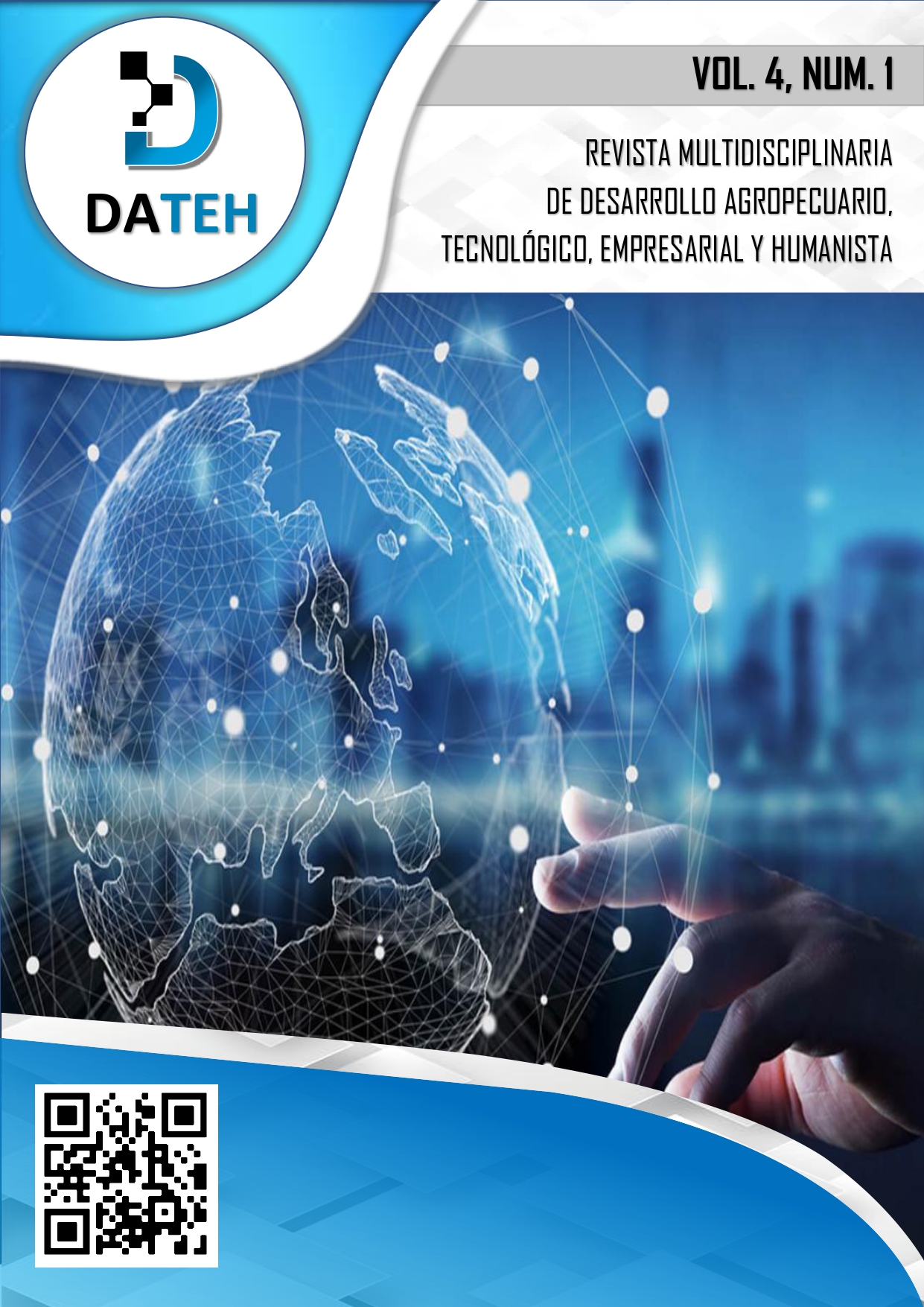Module for the control of two process variables
Abstract
The control and automation of industrial processes allow industries to improve their production and there is greater profitability, the didactic module of control of two variables, will reinforce the theoretical and practical knowledge in the students of the Electromechanical career of the Technical University of Cotopaxi, La Maná extension through the control and interaction with the variables flow and pressure, the student can perform practices designed for the use of the module and thus become more competitive in the industrial sector. The didactic module implemented has industrial elements such as: PLC, variator, pump, pressure transmitter, proportional control valve, in addition to a touch panel that allows the interaction between the user and the variables to perform Manual and Automatic controls. In manual mode the parameters of frequency in the inverter and position in the control valve are configured, in automatic mode the control of the two variables is performed using two types of control such as PID and On-Off.
Downloads
References
Ardila, O. P. (2017). Estado actual y futuro de la ingeniería de control. Puente, 4(2).
Borase, R. P., Maghade, D. K., Sondkar, S. Y., & Pawar, S. N. (2020). A review of PID control, tuning methods and applications. In International Journal of Dynamics and Control. https://doi.org/10.1007/s40435-020-00665-4
Cotos, R. (2019). Mecánica de fluidos. Impulsión de fluidos. In Mecánica De Fluidos.
DSI. (2016). Introducción a Los Controladores Lógicos Programables. Departamento de Sistema Informático.
Gutiérrez, M., & Iturralde, S. (2017). Fundamentos Básicos de Instrumentación y Control.
Harper, E. (2013). El ABC de la Instrumentación en el control de procesos industriales. Limusa.
Ibarra, D. G., Cadavid, A. N., & Rojas, J. G. (2018). MODELADO. In Estimación de canal MIMO en ondas milimétricas mediante motores de juegos y aceleración por Hardware. https://doi.org/10.2307/j.ctv1t8c0x.8
Kuphaldt, T. R. (2016). “Lessons In Industrial Instrumentation, version 2.33.”
MA’ARIF, A., ISTIARNO, R., & SUNARDI, S. (2021). Kontrol Proporsional Integral Derivatif (PID) pada Kecepatan Sudut Motor DC dengan Pemodelan Identifikasi Sistem dan Tuning. ELKOMIKA: Jurnal Teknik Energi Elektrik, Teknik Telekomunikasi, & Teknik Elektronika, 9(2). https://doi.org/10.26760/elkomika.v9i2.374
Mesa, F., Ospina-Ospina, R., & Correa-Velez, G. (2020). Estimación de variables de estado (LA y LC) en sistemas de control. Revista UIS Ingenierías, 20(1). https://doi.org/10.18273/revuin.v20n1-2021010
Mott, R. L. (2006). Applied fluid mechanics. Prentice Hall.
Moya, S. (2018). Conceptos Básicos: Sistemas de Control | ISA Sección Central México. Revista InTech México Automatización, 1.
Pardo, C. (2022). Picuino. https://www.picuino.com/es/control-pid.html
PCE Instruments Chile SA. (2011). Manómetro. Uso y Funcionamiento, I.
Tecnología de Control. (2015). SISTEMA DE CONTROL DE LAZO ABIERTO Y LAZO CERRADO. SISTEMA DE CONTROL DE LAZO ABIERTO Y LAZO CERRADO.
Thorsen, K., Drengstig, T., & Ruoff, P. (2019). The effect of integral control in oscillatory and chaotic reaction kinetic networks. Physica D: Nonlinear Phenomena, 393. https://doi.org/10.1016/j.physd.2019.01.002



